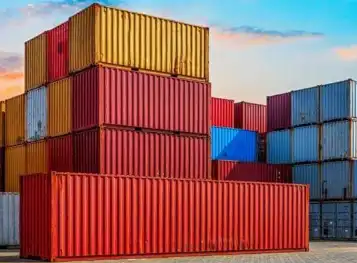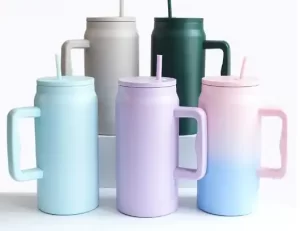As a senior foreign trade person and an experienced promotional product supplier, FuWinn Housewares needs to communicate with freight forwarders every day about shipping arrangements. Below I will share with you a total of 14 steps that I know.
1. Shipper’s inquiry:
We need to inform the freight forwarder of the basic cargo information, including: port of departure, port of destination, container type, container volume, whether trailer declaration is required, product name, and cargo weight.
Is that all right?
The above is the normal operation of regular goods. If there are special goods or dangerous goods, special handling is required, as follows:
For dangerous goods, our exporter must provide MSDS and transportation appraisal report (if this item is not available, you can submit MSDS to the shipowner for review first. Sometimes it is OK without a transportation appraisal report). There are liquid or powder products, such as watercolor pens. , chalk, etc.
Freezer: preset temperature, the master needs to open the vents and decide whether to pre-cool. This is not commonly used for our suppliers of promotional gifts. Food products will be used more often.
2. The freight forwarder quotes the price to the consignor.
Quotation to peers (price-oriented quotation): usually quoted from own resources, because the price is advantageous, most terms are CY-CY, and a few locations can provide destination and departure port services. Profits are relatively low.
Submit a quotation to direct customers (service demand quotation): usually quote a quotation for the service scope required by the customer, and the quotation is mostly a one-stop service DOOR-CY.
3. Accept the quotation and the shipper places BOOKING
After the quotation is accepted by the customer. First determine the shipping time, and the shipper will issue a BOOKING to the carrier.
The clear information in the BOOKING content includes: the shipper’s company name and the carrier’s company name.
Port of departure/receiving place, port of destination/receiving place, container type, container volume, whether trailer declaration is required, product name, cargo weight, shipping date (customs cut-off time), price.
4. Booking
Second-level freight forwarding: entrust a booking freight forwarder to book space from the shipping company; booking freight forwarder (first-level freight forwarding): book space directly from the shipping company.
The shipping company still has space left, the booking was successful, and the shipping company S/O was obtained.
5. Arrange a tow truck
According to the S/O time node and the delivery time conveniently arranged by the shipper, coordinate the towing and customs declaration time with the car dealer and customs broker.
6. Making cabinets is a heavy task and declaring VGM
Send the SO to the towing company, and the towing company will hold the S/O to place the order, and the trucking company will hold the equipment handover order and pick up the container at the yard.
Drag the container to the loading point and the organization will load it. After the cabinet is installed, lock the seal. Return the heavy container to the terminal yard. The terminal enters the yard for weighing, obtains VGM data, and reports the obtained VGM data on the shipping company’s official website.
7. Customs declaration and release
After the cabinets enter the storage yard, they begin to fill in the customs declaration form and make customs declarations. After passing, you will get a release slip. If you fail to get the release slip before the customs cut-off (cut-off slip) time specified by the shipping company, the shipping company will not allow the cargo to board the ship in principle.
If the expected time to get the release slip is later than the time when the shipping company intercepts the release slip, you can try to ask the booking freight forwarder to apply to the shipping company for a release slip for late-censored cargo (generally, the estimated time to get the release slip is 24 hours before leaving the ship) , you can try it, you can try it, although shipping companies may not necessarily agree).
8. Loading and replenishing hanging cabinets
When you have submitted the release slip, declared VGM, and submitted the replenishment information on time, don’t be happy too early, because your ship may explode, and your cabinet may be thrown to the next ship. water boat.
If everything goes smoothly, it means that the cabinet is on board.
Why do we need to refill sometimes?
The purpose of replenishment is to prepare a bill of lading, so as long as the replenishment information is submitted before the EDI (intercept for replenishment) specified by the shipping company. At this time, some will be after sailing.
The exception is that the US and EU regions have ENS and AMS manifest pre-declaration requirements. That is, the US and EU governments require shipping companies to declare manifest information 24 hours in advance before sailing. Therefore, shipping companies also require shippers to declare manifest information before sailing. Materials will be replenished 48 hours before the ship so that the shipping company can declare manifest information in advance.
9. Confirm the bill of lading
The shipping company will provide the COPY of the bill of lading based on the above information. We will send the COPY to the customer for confirmation. After confirming that the information is correct, the shipment can be passed directly. If an error is found, you can request a change order, and a change order will be generated.
10. Issue the bill and settle the freight.
Based on the previously confirmed service scope and quotation, a bill is issued and sent to the customer for confirmation. After confirming that there are no problems, the customer is usually required to pay the price before releasing the goods. Then enter the delivery process. And confirm that the cost is correct, it will be included in the bill, and the goods can be released.
11. Release goods
Delivery of goods can be divided into telex release and original bill of lading. Let’s take a look at the specifics.
A. Electric discharge
For telex release, the customer fills out the telex release guarantee letter as required and starts the telex release process.
B. Original bill of lading
Send it to the customer (shipper) by mail or in person.
PS: The right to ship SWB cargo has been assigned to the designated consignee, so there is no need to release the cargo.
12. Arrival at port – order exchange and customs clearance
If the original bill of lading is used to release the goods, the original bill of lading can be used to apply for a bill of lading (small bill of lading). If it is a telex release, just take the fax to stamp the telex release with the official seal, exchange the stamped telex release with the captain’s bill of lading, and then apply for the bill of lading.
Please note here that customers need to pay local fees before they can exchange orders and pick up the goods. According to the requirements of the country where you are located, go to the customs with relevant documents and go through the customs clearance procedures. After passing the customs, you will be released.
13. Lifting and unloading containers
The customer exchanges the small bill of lading for the equipment handover order and applies for deposit and container pick-up with the equipment handover note and container pick-up application.
14. Return the deposit if it is still empty
Finally, the customer drags the goods to the yard, unloads them, and then drags the empty container back to the yard. Go through relevant procedures to return the deposit.
The above is all the procedures for customs clearance and delivery from China to the destination country. If you need to know more, you can contact us. We’d like to answer.





